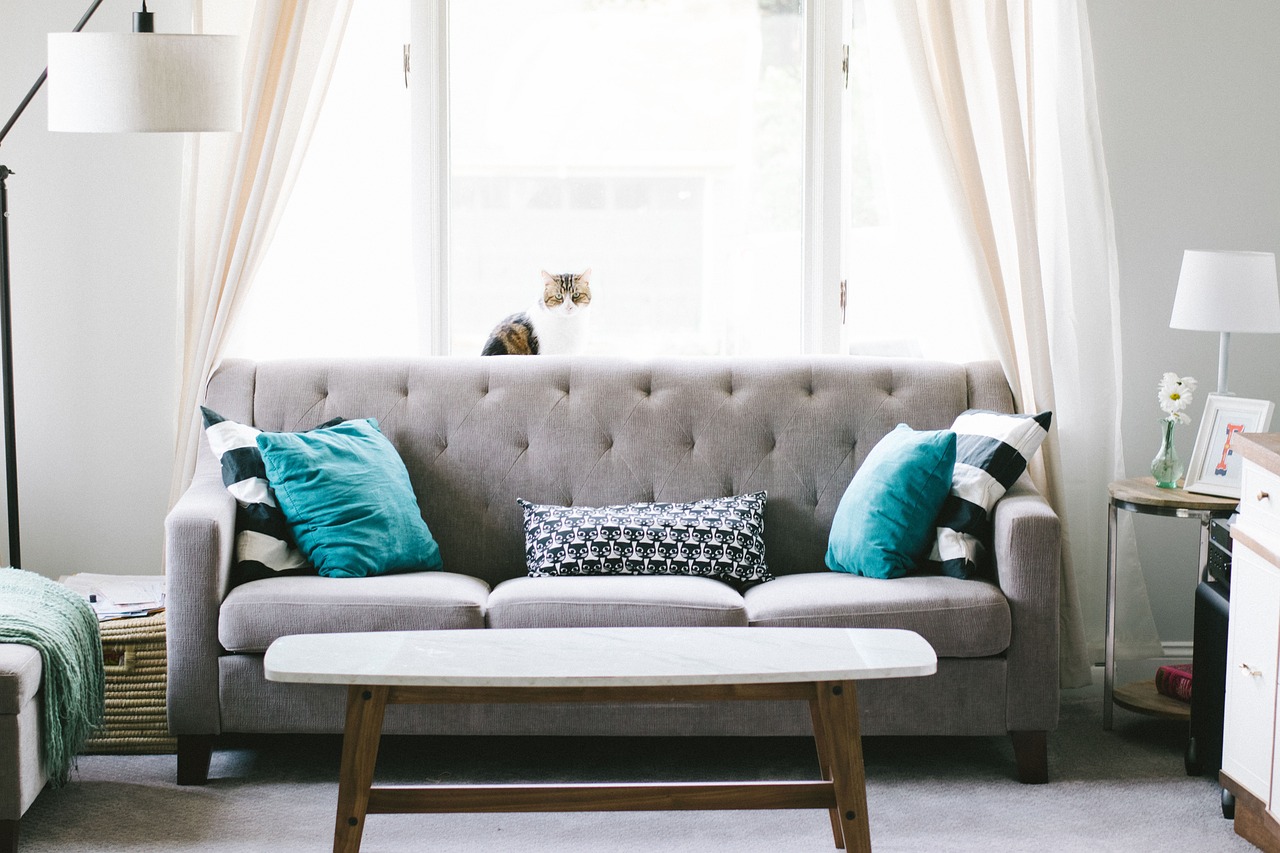How Furniture Stores Can Optimize Inventory Management
February 6, 2024 - 11 minutes readInventory management is an important operational process for furniture retailers.

The scents of oak, pine, and leather found in a furniture store take us back to a simpler time, before computers and the internet became the backbone of the retail shopping industry.
With raw materials and finished goods of all shapes and sizes, global supply chains, high value inventory, and fluctuating demand, the retail furniture business is more complex than it appears. Modern inventory management tools and practices help overcome these challenges.
“You are either in your bed or in your shoes, so it pays to invest in both.” – John Wildsmith
The evolution of the furniture store
The furniture store is one of the oldest retail enterprises in existence, dating back to the ancient craftsmen who sold their own handiwork in public markets hundreds of years ago. While this traditional model has endured in some quarters, technology and globalization have redefined the retail furniture industry by introducing:
- Mass-produced furniture purchased from wholesalers
- Ready-to-assemble furniture sold in flat packs
- Customized wood, trim, fabric, and color options
- E-commerce and online furniture stores
Most consumers have embraced these changes, but many still favor the interactive experience found in traditional furniture stores where they can touch and visualize new items in their homes. Modern inventory management practices give furniture buyers more options while enabling faster turnaround times.
7 keys to optimized inventory management for furniture stores
Furniture stores, with their relatively slow inventory turns, bulky items, and spacious layouts might seem like an unlikely place to find advanced inventory management at work, but the modern furniture retailer can enjoy many benefits and conveniences when they use the available tools wisely.
1. Real-time visibility
In the retail industry, few items are as visible as sofas, beds, and recliners. Unfortunately, that doesn’t always make them, and the parts that go into them, visible to furniture store employees addressing space constraints and order fulfillment challenges. Inventory management software allows retailers to keep real-time inventory data at their fingertips and minimize long walks through the warehouse or showroom floor searching for items.
With over 40% of furniture shoppers now making purchases online, the real-time visibility provided by inventory management software is also essential when obtaining status updates and other information from third party vendors. This data can be ported to multiple E-commerce platforms simultaneously to give customers an accurate assessment of furniture availability and lead times.

2. Barcoding
The process of tracking inventory using barcode labels or QR codes is often associated with grocery shopping and high volume warehousing, but the accuracy and efficiency gained through barcoding applies equally well to furniture stores. Barcodes speed up and error-proof inventory transactions when furniture is received from outside sources, moved from one location to another, or sold. Additional benefits of barcoding for furniture retailers include:
- Efficient cycle counts and audits
- Encoded product information
- Simplified return processing
- Loss prevention and security enhancement
- Integration with inventory management software
Barcoding requires some initial investment in hardware and software, including portable wands used to scan items, but these upfront costs are quickly offset by the efficiency, accuracy, and customer satisfaction that come from fast and error-free inventory transactions. User-friendly quick response (QR) codes carrying up to 100 times as much information as traditional barcode labels can be scanned using only a smartphone with an inventory management app installed.
3. Build to order (BTO)
Brick-and-mortar furniture stores and online retailers gain a competitive advantage by offering customized products. The build-to-order (BTO) approach also prevents furniture stores from overstocking pre-built products that have no immediate demand. Inventory management makes BTO possible by monitoring and controlling the components required for each variation.
A build-to-order model helps align production with demand to minimize high finished good holding costs throughout the supply chain. Integrating sub-tier suppliers into the inventory management system ensures customized orders are not subject to long lead times that deter potential customers.
“Don’t find customers for your products, find products for your customers.” – Seth Godin
4. Forecasting demand
Furniture that is not built to order, such as mattresses, dining tables, and dressers, can be expensive to build and store, which makes accurate forecasting of demand essential. Inventory management tools analyze all historical data to create accurate forecasts based on recognized trends and statistically valid predictions.
Furniture stores also use forecasting tools to plan marketing campaigns based on seasonal demand and staff stores with the appropriate number of employees. Retailers with multiple locations or sales channels can integrate their mobile point of sale (POS) systems with their inventory control software to enable more up-to-date forecasting based on the current demand.
5. Optimized delivery schedules
The personal nature of furniture makes close coordination with customers imperative before, during, and after the delivery process. Missed or delayed deliveries can become a source of frustration for buyers who arrange their schedules based on expected delivery times. With special skills and attention to detail required to complete the critical final leg of the furniture delivery process, “last mile” delivery service accounts for 53% of the total shipping cost.
Inventory management processes play an important role in furniture deliveries by ensuring products are available to be picked up as planned and delivery schedules coincide with customer expectations. The inventory management system can also be used to send automated status updates to customers at each important delivery milestone.
6. Going mobile
The size and scope of modern furniture stores make mobile inventory management practices extremely useful for cycle counting, point of sale (POS) transactions, delivery status tracking, and remote decision-making. Mobile apps on phones and tablets are especially valuable in larger stores where sales and supporting staff are often dispersed across the showroom.
Rather than returning to their desks to input data on orders, arrivals, returns, or missing items, employees can update inventory status on the go to improve efficiency. Mobile inventory management options also give sales clerks real-time access to price and availability information as they discuss options with customers.
7. Omni-channel commerce
For many furniture retailers, the brick-and-mortar store has become a hub for an integrated shopping experience that includes in person, online, and mobile options. For an omni-channel shopping model to be effective, customers must experience consistent offerings, pricing, and discounts on each platform.
The centralized inventory tracking, order fulfillment, and analytics provided by inventory management software make it possible to avoid discrepancies in stock levels and other disconnects that can lead to dissatisfied customers.
Preserving the old, embracing the new
Nothing can replace the experience of shopping for furniture in a retail setting designed to mimic the personal home environment. However, inventory management and other new software applications can enhance the shopping experience when they are utilized wisely. The exciting new tools and technologies available to furniture retailers include:
- Augmented reality: Until recently, it was impossible to tell how a piece of furniture might fit your home décor without renting or buying it. Augmented reality apps let you place 3D models of furniture into any space to gauge the physical and aesthetic fit alongside your existing furniture.
- Custom design apps: E-commerce and BTO are supported by custom furniture design apps that allow you to choose from hundreds of fabric, finish, and trim options while instantly viewing the finished product on your computer screen or cell phone.
- Customer relationship management (CRM): The significance of furniture purchases make customer communication and feedback essential. CRM software allows retailers to monitor the sales process, create insightful customer profiles, and analyze customer data to optimize marketing strategies and the user experience.
Furniture stores and inventory management: Final thoughts
E-commerce, mobility, and customization have made the centuries-old retail furniture industry stronger than ever. At the same time, material shortages, increased competition, and poor visibility can undermine profits without the right tools in place. As the modern furniture store evolves, inventory management tools and practices provide distinct advantages.
With an advanced, cloud-based software suite encompassing inventory management, CRM, and warehouse management, Agiliron provides the right set of tools for today’s multi-faceted furniture store. Our mobile Point of Sale features allow sales clerks to complete transactions from anywhere, with or without an internet connection, while our B2B and B2C webstores let retailers sell in more places but manage in one.
Intelligent inventory management practices ensure durable goods like furniture are affordable and available. If you are a retailer, we can help you turbocharge your sales while improving your efficiency. Contact us and let one of our experts explain how you can benefit from our solutions today and in the future.
Tags: inventory management